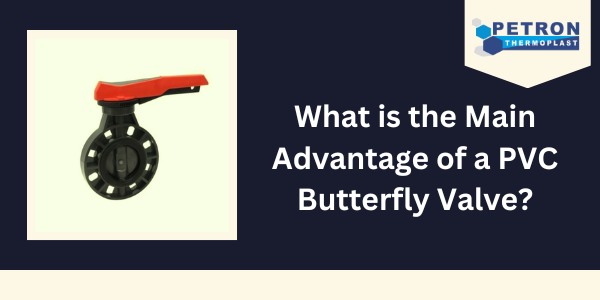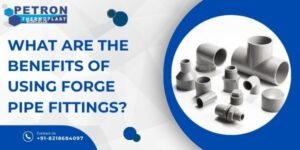In the realm of fluid control systems, the PVC butterfly valve stands out as a versatile and efficient precision machined component. Engineered to regulate the flow of various fluids, these valves offer numerous benefits that make them indispensable in a wide range of applications. From industrial processes to municipal water systems, understanding the main advantage of a PVC butterfly valve is crucial for optimizing system performance and ensuring reliable operation.
Introduction to PVC Butterfly Valves
Before delving into their main advantage, let’s first explore what PVC butterfly valves are and how they function. Unlike traditional valves, which utilize a rotating ball or gate to control flow, butterfly valves employ a disc mounted on a rotating shaft. This disc is positioned perpendicular to the flow when closed and parallel to it when open, allowing for precise regulation of fluid passage.
Key Components of a PVC Butterfly Valve
- Body: Typically made of PVC (polyvinyl chloride), the body of a PVC butterfly valve provides structural support and houses the internal components.
- Disc: The disc, also known as the “butterfly,” controls the flow of fluid by rotating within the valve body.
- Shaft: The shaft connects the actuator to the disc, transmitting the necessary force to open or close the valve.
- Seat: The seat forms a tight seal around the disc, preventing leakage when the valve is closed.
- Actuator: In automated systems, the actuator is responsible for operating the valve based on external signals or preset conditions.
Advantages of PVC Butterfly Valves
Now, let’s explore the main advantage of PVC butterfly valves and why it sets them apart from other types of valves in fluid control systems.
Versatility in Fluid Compatibility
One of the primary advantages of PVC butterfly valves lies in their compatibility with a wide range of fluids. Unlike some materials that may corrode or degrade when exposed to certain chemicals or substances, PVC exhibits excellent resistance to acids, alkalis, and various corrosive agents. This inherent chemical resistance makes PVC butterfly valves suitable for handling aggressive fluids across diverse industries, including chemical processing, wastewater treatment, and pharmaceutical manufacturing.
Moreover, PVC is inherently inert, meaning it does not react with most substances, ensuring the purity and integrity of the fluid being conveyed. This makes PVC butterfly valves an ideal choice for applications where maintaining product quality and purity is paramount, such as in the food and beverage industry or laboratory environments.
Cost-Effectiveness and Durability
Another notable advantage of PVC butterfly valves is their cost-effectiveness and durability. PVC is a relatively inexpensive material compared to alternatives such as stainless steel or PVDF ball valves, making PVC butterfly valves a budget-friendly option for fluid control systems. Despite their affordability, PVC butterfly valves offer impressive durability and longevity, thanks to PVC’s inherent resistance to corrosion, abrasion, and wear.
Additionally, PVC butterfly valves require minimal maintenance, reducing downtime and operational costs over their lifespan. Their simple design and fewer moving CNC machine parts contribute to their reliability, making them a preferred choice for critical applications where downtime must be minimized.
Lightweight and Easy Installation
Compared to metal valves, PVC butterfly valves are significantly lighter, making them easier to handle and install. This lightweight nature not only simplifies transportation and handling but also reduces the need for heavy-duty support structures, lowering installation costs and complexity.
Furthermore, PVC butterfly valves can be installed in various orientations, offering greater flexibility in system design and layout. Whether mounted vertically, horizontally, or at an angle, these valves can adapt to the specific requirements of the application, optimizing space utilization and efficiency.
Efficient Flow Control
The design of PVC butterfly valves facilitates efficient flow control across a wide range of operating conditions. By simply adjusting the position of the disc, operators can precisely regulate flow rates with minimal frictional losses. This results in improved energy efficiency and reduced operating costs, particularly in systems where flow control is critical for process performance.
Moreover, PVC butterfly valves offer quick and responsive actuation, allowing for rapid adjustments to changing process conditions. Whether manually operated or integrated into automated control systems, these valves provide reliable performance and precise flow control, enhancing overall system efficiency and productivity.
Reduced Pressure Drop
In fluid control systems, minimizing pressure drop is essential for maintaining optimal flow rates and system performance. PVC butterfly valves excel in this regard, thanks to their streamlined design and low resistance to flow. Unlike some other valve types that can cause significant pressure drop across the valve body, PVC butterfly valves feature a straight-through flow path when fully open, minimizing turbulence and pressure losses.
This reduced pressure drop not only enhances system efficiency but also helps preserve pump performance and extend equipment life. By minimizing energy consumption and reducing wear on system components, PVC butterfly valves contribute to overall cost savings and operational reliability.
Future Trends and Innovations
Looking ahead, the field of fluid control continues to evolve, driven by advancements in materials, design, and technology. While PVC butterfly valves already offer numerous advantages, ongoing research and development efforts are focused on enhancing their performance and expanding their capabilities.
Integration of Smart Technologies
One notable trend is the integration of smart technologies into PVC butterfly valves to enable remote monitoring, diagnostics, and control. By incorporating sensors, actuators, and connectivity features, these intelligent valves can provide real-time data on valve status, flow rates, and operating conditions. This data can be leveraged to optimize system performance, predict maintenance needs, and improve overall efficiency.
Sustainable Materials and Design Practices
As sustainability becomes an increasingly important consideration in fluid control systems, there is growing interest in using eco-friendly materials and adopting sustainable design practices for PVC butterfly valves. This includes exploring alternative materials derived from renewable sources, optimizing valve designs for energy efficiency, and implementing recycling programs for end-of-life valves.
Enhanced Performance and Reliability
Continual advancements in materials science and engineering are driving improvements in the performance and reliability of PVC butterfly valves. Manufacturers are developing innovative materials with enhanced mechanical properties, such as increased tensile strength and temperature resistance, to expand the range of applications for these valves.
Moreover, advancements in valve design, such as optimized disc geometries and sealing mechanisms, are improving sealing performance and minimizing leakage, ensuring reliable operation even in demanding environments.
Customization and Adaptability
Another emerging trend is the customization and adaptability of PVC butterfly valves to meet the specific needs of different industries and applications. Manufacturers are offering a wider range of valve sizes, configurations, and accessories to accommodate diverse fluid handling requirements.
Additionally, modular designs and interchangeable components allow for greater flexibility in system integration and maintenance, enabling users to tailor PVC butterfly valves to their unique operational challenges.
Conclusion
In conclusion, the PVC butterfly valve offers numerous advantages that make it a preferred choice for fluid control applications across various industries. From its versatility and cost-effectiveness to its efficient flow control and reduced pressure drop, the PVC butterfly valve delivers reliable performance and operational efficiency.
As the field of fluid control continues to evolve, PVC butterfly valves are poised to remain at the forefront, driven by ongoing innovations in materials, design, and technology. By embracing smart technologies, sustainable practices, and enhanced performance capabilities, PVC butterfly valves will continue to meet the evolving needs of modern fluid handling systems.
In essence, the main advantage of a PVC butterfly valve lies in its ability to provide reliable, efficient, and cost-effective fluid control solutions, making it an indispensable component in the world of industrial and municipal infrastructure.
Frequently Asked Questions (FAQs)
1. What is a PVC butterfly valve?
A PVC butterfly valve is a type of valve used to control the flow of fluids in a piping system. It consists of a disc mounted on a rotating shaft within a PVC body. When the valve is open, the disc is parallel to the flow, allowing fluid to pass through. When the valve is closed, the disc is perpendicular to the flow, blocking the passage of fluid.
2. What are the main advantages of PVC butterfly valves?
The main advantages of PVC butterfly valves include:
- Versatility in fluid compatibility: PVC butterfly valves are resistant to a wide range of chemicals and corrosive substances, making them suitable for various applications.
- Cost-effectiveness and durability: PVC is an inexpensive material that offers excellent durability and resistance to corrosion, abrasion, and wear.
- Lightweight and easy installation: PVC butterfly valves are lightweight, making them easy to handle and install compared to metal valves.
- Efficient flow control: PVC butterfly valves provide precise flow control with minimal frictional losses, resulting in improved energy efficiency.
- Reduced pressure drop: PVC butterfly valves have a streamlined design that minimizes turbulence and pressure losses, enhancing system performance.
3. Where are PVC butterfly valves commonly used?
PVC butterfly valves are commonly used in a variety of industries and applications, including:
- Chemical processing plants
- Water and wastewater treatment facilities
- Food and beverage processing
- Pharmaceutical manufacturing
- HVAC (heating, ventilation, and air conditioning) systems
- Municipal water distribution systems
4. How do PVC butterfly valves compare to other types of valves?
Compared to other types of valves such as ball valves or gate valves, PVC butterfly valves offer several advantages, including:
- Lower cost: PVC butterfly valves are generally less expensive than metal valves.
- Chemical resistance: PVC butterfly valves are resistant to a wider range of chemicals and corrosive substances.
- Lightweight: PVC butterfly valves are lighter and easier to handle and install.
- Efficient flow control: PVC butterfly valves provide precise flow control with minimal pressure drop.
5. Can PVC butterfly valves be automated?
Yes, PVC butterfly valves can be automated using actuators and control systems. Automated PVC butterfly valves allow for remote operation and monitoring, making them suitable for applications where precise control is required.
You May Also Like : PVC 3-Way Ball Valve Installation Guide From Petron Thermoplast
What Types Of Materials Are Used For Plastic Bearing?
Why Are Ball Valve Made Of Stainless Steel
Different Types Of Union Ball Valves And Their Uses
Follow Us On : Facebook, LinkedIn




